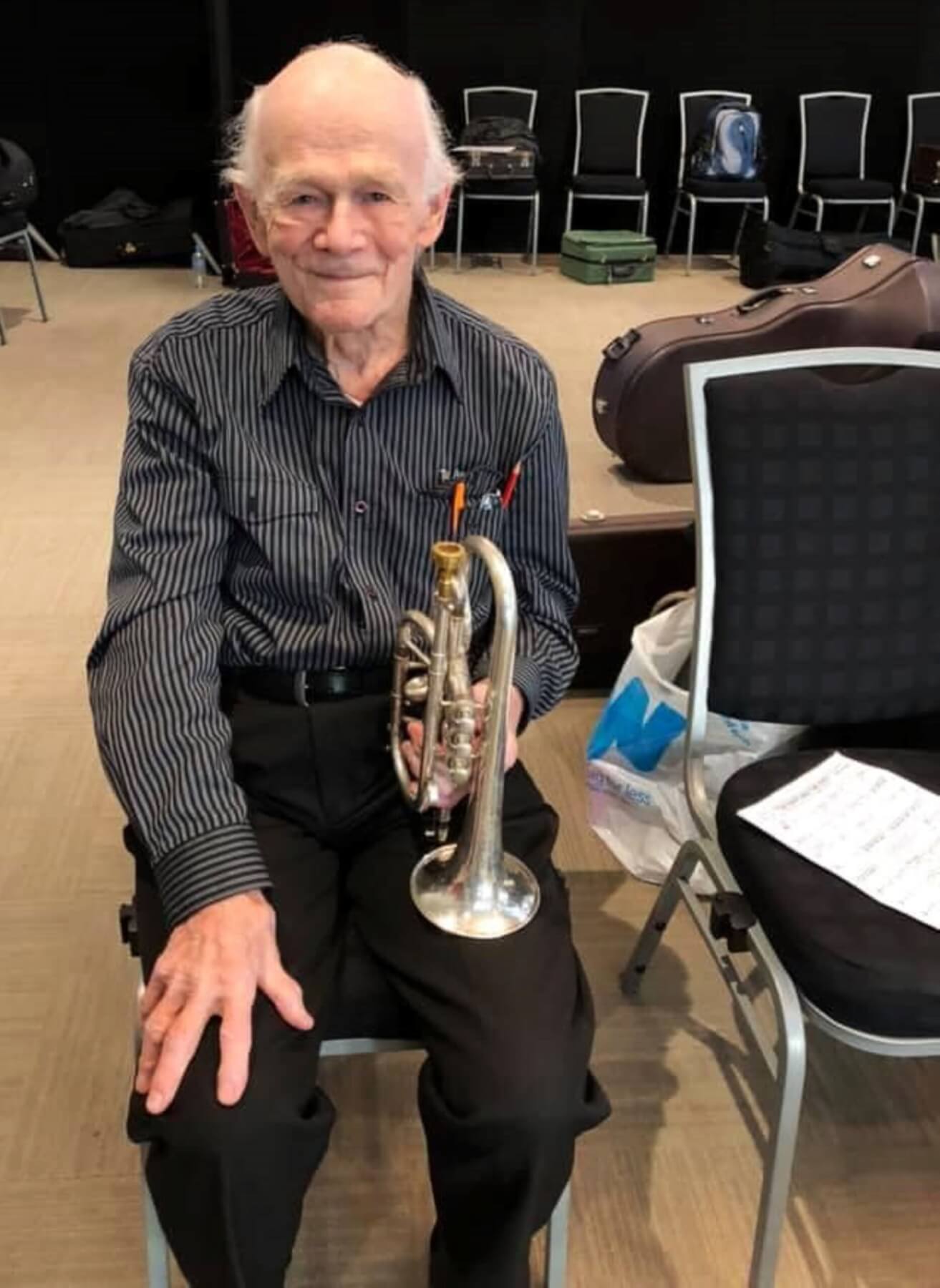
John Gibbons: June 26, 1927 – September 25, 2023
A guard of honour made up by band members from around the district farewells John Gibbons after Saturday’s funeral service in Te Awamutu.
The passing of renown Kiwi bandsman John Gibbons, whose funeral was in Te Awamutu last weekend, holds particular poignancy for Cambridge.
Among the 50 marches he composed for New Zealand towns and bands is one entitled ‘The Spirit of Le Quesnoy’, a piece written for the 2018 visit to the French town by the Cambridge Brass Band commemorating the centenary of its liberation as World War One was ending in November 1918.
Cambridge has had a sister city relationship with Le Quesnoy since 2000. A Waipā delegation will attend the official opening of the New Zealand Liberation Museum and Visitor Centre in the town on October 11.
Cambridge Brass Band musical director Rob Hocking said John’s march will open the Armistice Concert in the Cambridge Town Hall on November 10 to mark his passing.
John gained national and international recognition as a skilled bandsman, cornet and piano player, repairer of instruments and prolific composer. He died in Waikato Hospital on September 25, aged 96.
His funeral, at Te Awamutu’s St Patrick’s Catholic Church, acknowledged his musical standing with the inclusion of a brass band comprising members from around the region, including Cambridge. They played one of John’s marches, ‘The Town of Taumarunui’, and formed a guard of honour at the end of the service.
Born in Devonport and educated at St Leo’s Convent Primary and Sacred Heart College, John started his working life as a fitter, travelling around the King Country fixing petrol pumps. Devonport’s St Leo’s Church was where he later married Joan; the couple went on to adopt four children – Philip, the late Kevin, Veronica and Helen.
The latter spoke of their dad being ‘sentimental and a romantic’, evidenced by their parents’ affection for an Auckland café where on their wedding night 62 years ago they shared toasted sandwiches. “Six months ago, they went back to the same café and had toasted sandwiches.”
She spoke of John teaching woodwork and music, coaching school sports teams, his striving to keep young people off the streets. In 1959, he achieved the highest music exam mark in New Zealand – an LRSM from the Royal School of Music – coming first equal with Dame Kiri Te Kanawa.

John Gibbons with his beloved cornet.
He taught his own children lifeskills such as welding, direction-finding using a compass, and the value of changing a tyre and checking the oil before heading out in a car. They toiled as a family to build a garage, lay concrete and paint the house, often adopting techniques that Philip’s letter to the congregation suggested would not pass muster in terms of today’s safety regulations.
The family moved to Lower Hutt in 1974 where John taught fitter and turner courses and tech drawing until retiring in 1987, settling finally in Te Awamutu in 1999.
Retirement saw John and Joan travel and gave John more time to repair old band instruments. His musical renown was matched by his famed fish and chips, the strange language he invented, the cat stories he wrote, trainspotting and his love of cycling. In 1948, he biked from Auckland to Wellington.
Te Awamutu Brass member Steve Wilson said that outside his extensive association with bands, John was an accomplished pianist who spent many hours entertaining the elderly at Matangi’s Assisi Home, or at Rosehill Village where he and his wife Joan lived.
He said John had given 58 years of service to the brass band organisation, starting out with the Takapuna Municipal band in 1943. He played for various bands through the years, including Cambridge in 1996 and 1999.
A march he composed for the 6th Hauraki Battalion, which carried lyrics written by Gavin Marriott, is rated as one of the world’s top marches, and was played in front of the late Queen Elizabeth.









